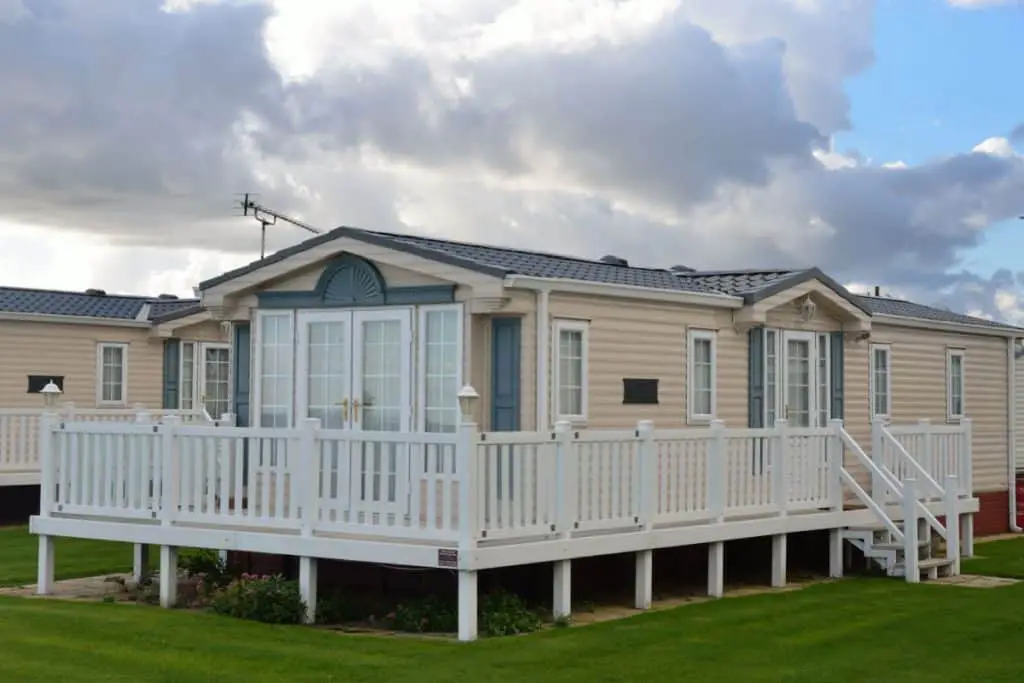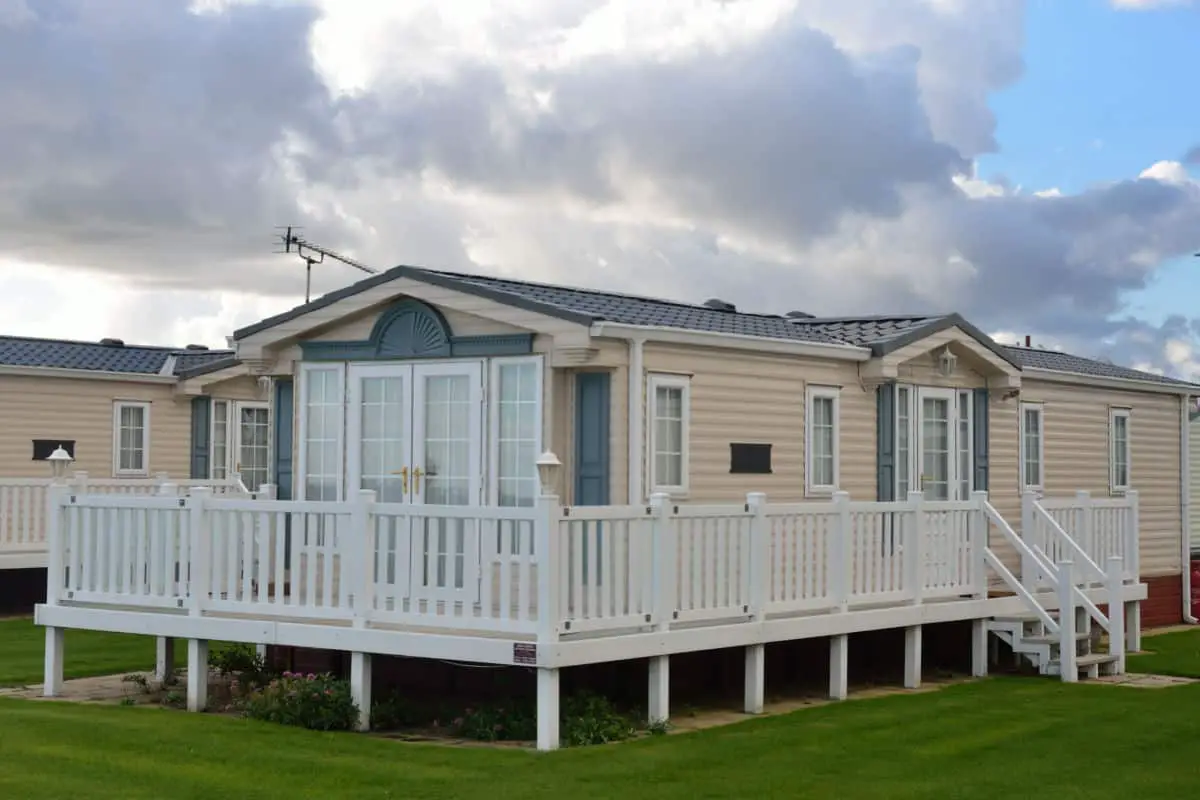Are you tired of living in the city, trapped in the rat race, and seeing your paycheck diminished by utility bills and home maintenance? Perhaps you’re thinking of downsizing to save on living costs but are stuck wondering if a tiny home is the same as a mobile home.
A tiny home is not considered a mobile home. Also referred to as a manufactured home, a mobile home is much larger, less expensive, and regulated by government bodies. Tiny homes offer more flexible designs, but mobile homes are factory-built and can’t be moved easily without a moving permit.
In the rest of the article, we’ll talk about the differences between tiny homes and mobile houses, elaborating on their features, and further detailing the benefits of tiny homes.
What Is a Tiny Home?
Although there’s no official or legal definition for a tiny home, because it means different to different people, a tiny house typically ranges between 100 and 400 sq. ft. (9.29 and 37.16 sq. m). People can either buy or rent a tiny home, and they can be on wheels or set on a foundation.
It has all the basic amenities you can find in a permanent regular home, including a kitchen, sleeping area, and bathroom. It could be either detached or semi-attached, and designed by the owner or purchased pre-built from a kit.
It’s part of a movement that supports living simply and setting yourself free of the burden of basic utilities’ bills and mortgage. People choose these homes to downsize and hold the notion that less is more. It’s a challenge against the status quo and the culture of consumerism and ownership.
What Is a Mobile Home?

There’s also a lot of confusion around what counts as a true mobile home. People confuse mobile homes with RVs, campers, modular homes, and even log cabins.
According to HUD, a mobile home is a manufactured house that has to adhere to HUD building codes. They’re factory-made houses that people move to their desired location and keep there permanently.
Mobile homes and trailers were the same before HUD started to supervise their construction. They have wheels that allow them to travel. But they’re different now because mobile homes are on a permanent chassis and have a masonry foundation. They’re moveable but moving them is very difficult and costly.
Mobile homes (or prefabricated homes) are similar to site-built houses. Still, they’re factory-made, transported to the site as a whole unit with a permanent chassis, and constructed according to federal building codes.
How They Compare: Mobile Homes vs. Tiny Houses
Both tiny homes and mobile houses started as a response to economic conditions that didn’t allow for regular site-built homes. Mobile homes have been around longer than tiny homes, dating back to the 50s. Here are the main differences between these two kinds of home:
They Are Distinguished by Size
Tiny homes are typically smaller than mobile homes, making sense because tiny homes offer a solution to the land shortage. The smallest mobile home is more than 700 sq. ft. (65.03 sq. m), while a tiny home is 500 sq. ft. (46.45 sq. m) or less.
The mobile homes’ bigger size makes them a more viable option for families. However, tiny homes are better for people who love the flexibility and adapt their homes to their needs and preferences.
Designs and Customizations Vary
Tiny homes offer more variety when it comes to design and aesthetics. You can have them designed based on your own taste and preferences. You can choose the shape, size, and material of everything, from furniture to toilet and kitchen appliances. That’s why no two tiny homes are the same. There’s so much variety in materials and style that you may find yourself spending more than a regular home.
However, mobile homes are factory-made, which means they all look the same. Apart from their sizes (single wide, double wide, and triple wide), everything else is mass-produced. So, there’s very little flexibility in terms of design and aesthetics.
The Quality of Construction Differs
Tiny homes are, typically, of a higher quality than mobile homes because they look like real houses only in smaller dimensions. However, since there’s no regulatory body to oversee the construction of tiny houses, the constructor may not build it of high quality. Plus, some people build these homes DIY and sacrifice quality to get lower costs.
Older mobile homes are of very low quality because they didn’t follow the HUD codes before 1976. They have out-of-date, poor-quality, and badly designed furniture, insulation, plumbing, and wiring. But modern mobile homes conform to the HUD code and have improved significantly since 1979.
The same thing goes for efficiency in terms of energy usage. Since new mobile homes have to conform to the HUD code, they need proper insulation, making them efficient. But since tiny homes aren’t regulated, they can simply bypass the rules. So, you may want to examine these factors carefully before purchasing a tiny home.
Costs Can Range Drastically
Mobile homes typically cost less than tiny houses. Although you can lower the costs by choosing budget materials, appliances, and furniture, a tiny house ranges between $10,000 and $200,000. However, you can find an average tiny home at about $60,000.
Mobile homes are less expensive, and you can find a second-hand one for as little as $25,000. That said, you can find more spacious, luxurious homes from $50,000 to $250,000.
The speed of construction also affects the costs. Since mobile homes are prefabricated, you can receive one just within a few weeks. On the other hand, tiny homes take much longer to construct. If you have a professional team build your tiny home, it’ll take much less than when you do it yourself.
How Mobility Is Factored In
Most tiny houses are on wheels, allowing them to get around some construction codes and move to different locations.
On the other hand, mobile homes are the exact opposite of what their name suggests. Technically, you can move them around, but it’s expensive and needs professional help and a moving permit.
The Benefits of Tiny Homes
The tiny house movement is here to stay because of the many benefits it offers for its followers:
They Come With Financial Advantages
A tiny house can provide decent housing for the same length of time and with the same quality as conventional homes. They have the same quality but cost less, and not just in terms of building. They’re easy to maintain and cost less in terms of electricity and gas. They also have lower taxes and rent, allowing for saving more.
Plus, you don’t need to buy many things since there’s simply no room for frivolous shopping. That’s exactly the spirit of going against consumerism.
Tiny Homes Offer Simplicity
The essence of tiny homes is leading a simpler life by owning less. That translates into spending less time, money, and energy on maintaining, upgrading, and even thinking about the stuff you own. This way, we’ll have more time and energy to appreciate the things we didn’t know existed.
They Create Environmental Impacts
Tiny homes allow the owners to reduce their carbon footprint by consuming less. They produce less waste and consume less energy by living off-grid. It also needs fewer building materials and uses renewable resources.
They’re an eco-friendly option because they can use green infrastructures such as solar panels or features like composting toilets. And since they don’t conform to government regulations, you can use whatever features you like to make them green and cost-effective.
Conclusion
Tiny homes and mobile homes aren’t the same things. While they come from similar concepts of cost-effectiveness and using less land, they are different in size, cost, design, and mobility.
Tiny homes are smaller but more expensive than mobile homes. However, mobile homes offer less variety in terms of design and style because they’re prefabricated in factory assembly lines.
Tiny homes offer a cost-effective and eco-friendly alternative to conventional homes and are perfect for nature lovers and digital nomads because it’s mobile.

